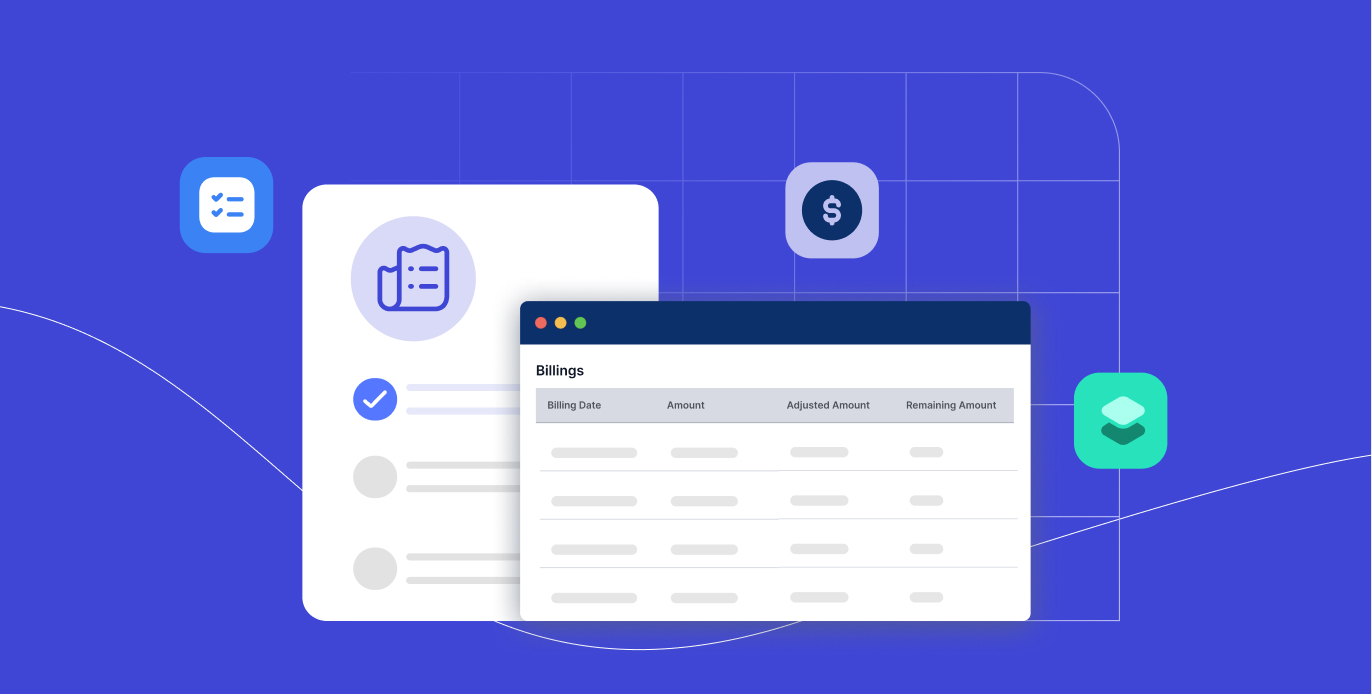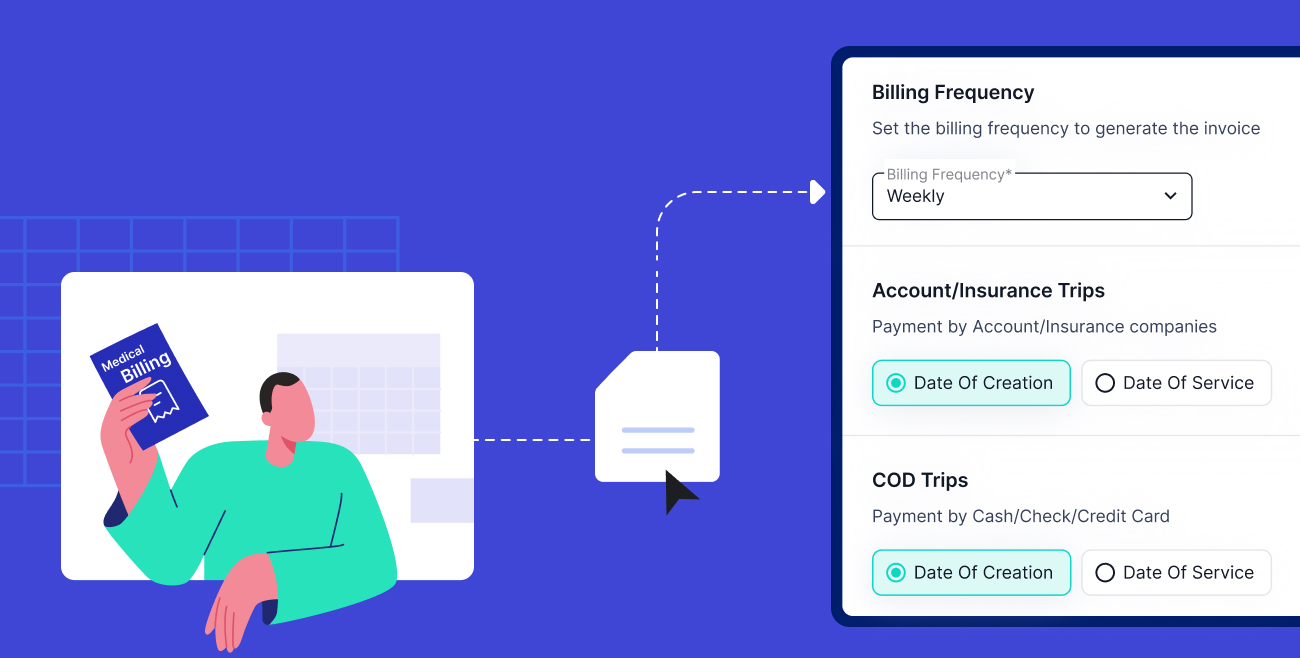
Table of Contents
Non-emergency medical transportation (NEMT) services facilitate transportation for individuals unable to travel to medical services independently.
Billing for these services involves multiple stakeholders, including healthcare providers, transportation providers, Medicaid, and other insurance entities. The complexity arises due to each entity’s varying requirements and regulations, especially the state’s specific Medicaid guidelines, which can be intricate and frequently updated.
In this article, we highlight some of the most common billing issues NEMT providers face and provide helpful tips for solving these issues and getting paid for their services faster.
Do More with Less
Handle more trips with fewer dispatchers on your payroll with Tobi.
Request a DemoWhat are common billing issues?
Billing issues in the NEMT sector can significantly hinder efficient operations and financial stability.
Here’s a breakdown of the most common problems:
1. Incorrect Patient Information
Patient details such as name, address, Medicaid identification number, or other crucial information are sometimes entered incorrectly into the billing system.
This can lead to claim rejections or payment delays, as accurate information is critical for insurance claims and compliance with state regulations.
2. Inadequate Documentation
Proper documentation is essential for billing.
This includes detailed records of the service provided, such as time, date, distance traveled, and the reason for transportation. Inadequate or inaccurate documentation can result in denied claims because insurers or Medicaid may not find sufficient proof that the service was necessary or conducted as claimed.
3. Issues with Insurance Verification
Before providing services, NEMT providers need to verify the patient’s insurance coverage.
Failure to confirm whether the patient is eligible for NEMT services under their specific health plan or unawareness of the coverage details can result in providing services that are not covered, leading to unpaid claims.
4. Compliance with State-Specific Regulations
Every state has its own set of rules and regulations governing NEMT services, including specific forms, coding requirements, and submission deadlines.
Providers must be thoroughly familiar with these regulations; otherwise, they risk compliance issues that can lead to audits, fines, or claim denials.
Solutions for Common Billing Issues
Even though the issues we mentioned are prevalent and challenging, there’s still hope to overcome them. Below, we outline four methods to help clear these hurdles and keep your operations moving forward.
1. Implement Robust Verification Processes
Verifying patient information and insurance details is crucial in the NEMT sector to ensure that services are necessary, approved, and billable.
Accurate verification helps avoid billing errors, such as claim denials and delays, often resulting from incorrect patient data or unconfirmed insurance coverage.
This step ensures that the transportation provided is eligible for reimbursement by insurance providers, including Medicaid, facilitating a smoother billing process and maintaining financial stability.
Step-by-step Guide to Set up an Effective Verification Process
1. Collect Initial Information
When the service is requested, gather all necessary patient information, including full name, date of birth, contact details, and specific insurance information (e.g., insurance provider, policy number).
2. Use a Standardized Form
Implement a standardized form, either in digital or paper format, to capture all required data uniformly. This will help maintain consistency and accuracy in data collection.
3. Verify Insurance Details
Use online verification tools provided by insurance companies to confirm the patient’s eligibility and understand the coverage details, including what types of NEMT services are covered and if there are any restrictions or pre-authorization requirements.
4. Regular Updates
Update patient and insurance information in your system regularly. Set reminders for periodic verification to catch any changes in insurance policies or patient eligibility, particularly for regular users of NEMT services.
5. Staff Training
Train staff on the importance of accurate data entry and verification. Ensure they understand how to use verification tools and know the common pitfalls and errors to avoid.
6. Quality Checks
Implement periodic quality checks to ensure that the information being used is up to date and accurately entered into the system.
Tools and Software That Can Aid in Verification
- Electronic Health Records (EHR) Systems: These can integrate patient data and insurance information, providing a single source of truth that can be easily accessed and updated.
- Insurance Verification Software: Specialized software can automate the process of checking insurance eligibility, significantly reducing the time and effort required compared to manual checks.
- Customer Relationship Management (CRM) Systems: CRMs can store patient information and document all interactions, including insurance verification results, which helps maintain a historical record and streamline communication.
2. Enhancing Documentation Practices
It proves that services were rendered as described and are compliant with all regulatory requirements.
Detailed and accurate documentation ensures that claims are processed efficiently and paid promptly. It also plays a crucial role in audits, where thorough records can be the difference between proving compliance and facing penalties for discrepancies.
Proper documentation safeguards against fraudulent claims and establishes a clear trail of accountability.
Technology Solutions That Help Streamline Documentation
- Document Management Systems (DMS):
Use a DMS to store, manage, and track electronic documents. These systems can help organize documents better, speed up retrieval, and secure sensitive information, enhancing overall documentation practices.
- Integrated NEMT Software:
Implement NEMT management software that integrates scheduling, dispatch, billing, and documentation. Such software can automatically populate records from the dispatcher to the driver’s app, reducing the need for manual entry and decreasing the chances of errors.
3. Regular Training and Updates on State Regulations
These regulations can change frequently and are influenced by updates in healthcare policies, Medicaid rules, and local government directives.
Compliance with these regulations is essential to ensure that services are provided within the legal framework and that billing practices align with state requirements. Staying informed helps NEMT providers avoid legal pitfalls, reduces the risk of fines or penalties for non-compliance, and ensures that claims are accepted and reimbursed by Medicaid or other insurance providers.
Suggested Training Methods and Resources for Staff
- Regular Workshops and Seminars: Conduct workshops or seminars specifically designed to address the latest changes in NEMT regulations. These can be held quarterly or bi-annually and led by experts in NEMT regulatory compliance.
- Online Training Modules: Implement online training modules that staff can complete at their convenience. These modules should be updated regularly to reflect regulation changes and include quizzes or tests to ensure understanding.
- Newsletters and Email Updates: Keep staff informed through regular newsletters or emails that provide updates on regulatory changes. This method ensures that all staff members receive the same information and can quickly be notified of urgent updates.
- Engagement with Professional Associations: Encourage staff to join professional associations related to the NEMT industry. These organizations often provide resources, training, and updates on regulatory changes.
4. Leveraging Technology for Efficient Billing
Specialized NEMT billing software plays a pivotal role in streamlining the billing processes within the industry.
This type of software—like Tobi—is designed to handle the unique requirements of NEMT services, including compliance with state and federal regulations, processing claims, and managing reimbursements from Medicaid and other insurers.
Software automates many of the manual tasks associated with billing, reducing the risk of human error and increasing the accuracy of claims. It also typically features capabilities for handling complex billing scenarios unique to NEMT services, such as variable rates based on distance, time, or the specific type of transportation service provided.
Benefits of Integrating Billing Software with Other Systems
Integrating NEMT billing software with other operational systems like scheduling and dispatch offers several significant benefits.
Firstly, it creates a seamless workflow, as information from dispatch and scheduling automatically flows into the billing system, ensuring that all billed services are accurately logged and correspond to actual services rendered.
This integration reduces the time spent on data entry and minimizes discrepancies between the services provided and those billed. Additionally, it helps generate real-time updates and reports, which can be crucial for making operational decisions and improving service efficiency.
By linking these systems, NEMT providers can offer better customer service, as billing inquiries can be resolved quickly by referring to the integrated data across platforms.
Curious to see how Tobi can help you run your NEMT operations more efficiently? Request a demo for a free 30-day trial and experience how Tobi makes your business better at every turn.



